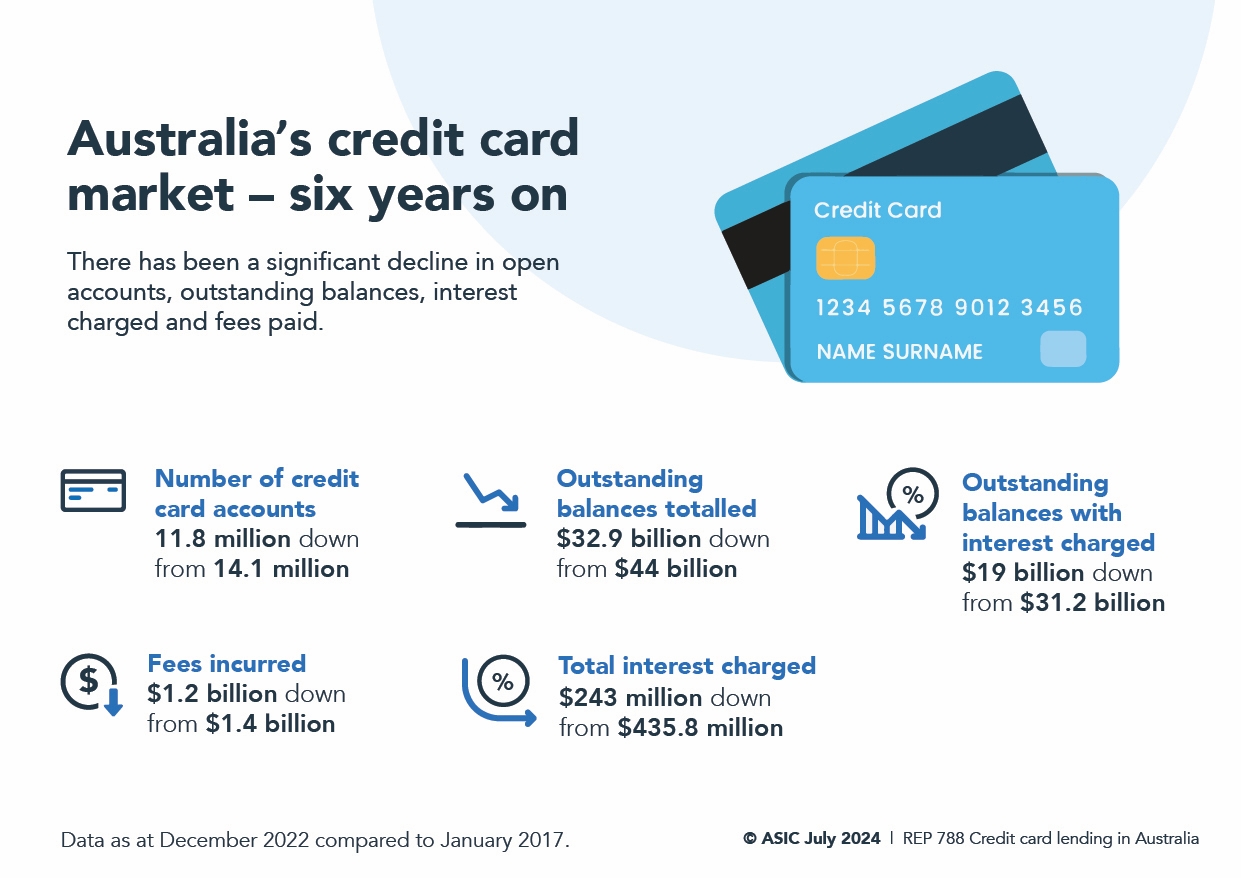Australians cost themselves more than $468 million over the past six years by not switching to low-interest credit cards.
A new Australian Securities & Investments Commission (ASIC) report on credit card use found lenders could do more to support customers.
ASIC Commissioner Kate O’Rourke said while many Australians had changed how they used credit cards, there were many, particularly young customers, who continued to struggle with credit card debt.
Commissioner O’Rourke said lenders had come some way in taking proactive steps to address persistent debt, low repayments and poorly suited products, however some failed to analyse their own data to identify consumers who may be at risk of financial hardship and communicate what help may be available.
“Our findings indicated that many consumers are still on high-interest rate cards and could have saved over $468 million during the six-year-review period if they were on low-interest rate cards.
“Some consumers may choose high-interest rate cards for particular features and benefits. However, this figure emphasises why credit card selector tools and ongoing assessments by lenders are important to ensure consumers have credit cards and credit card features that best suit their needs, objectives and financial situation.”
Commissioner O’Rourke said the Credit card lending in Australia: Staying in control report looked at around 20 million credit card accounts across 13 lenders over six years.
She highlighted actions credit card lenders could take to improve consumer outcomes, identifying a number of better practices some lenders had implemented. These included:
- Providing alternative account options for those who have problematic debt.
- Excluding consumers with problematic debt from marketing campaigns.
- Providing consumers with targeted reminders and education to help reduce persistent debt.
- Promoting credit card selector tools and conducting ongoing assessment of those using high-interest cards.
- Adopting measurable review triggers, including consumer outcomes, to enhance target markets.
- Analysing data so those at risk of financial hardship may be identified sooner.
“It is encouraging to see that credit card providers have upheld many commitments made following our 2018 review, with some making further inroads.”
Commissioner O’Rourke said one participating lender trialled sending SMS reminders to encourage consumers with problematic debt to make repayments earlier and pay more than the minimum amount.
She said this resulted in a 28 percent increase in payments.
Commissioner O’Rourke said over the review period, there was a significant decline in problematic debt, as well as the number of credit card accounts, total outstanding balances, amount of interest paid and fees charged.
“The impact of the pandemic, subsequent responses by government and industry, and evolving market conditions certainly played a role in these declines over the period,” she said.









